
ken villapando
Ford Mobile Service is changing the way vehicles get serviced by bringing the dealership directly to the customer. To support this shift, we designed a scheduling experience tailored to the unique needs of Mobile Service dealers and advisors. Built from the ground up, this tool gives dealers the flexibility to manage both fleet and retail appointments more efficiently helping Ford move closer to its mission: to help people move freely.
As a senior product designer on this project, I focused on simplifying scheduling for Mobile Service dealers while improving the overall customer experience by taking a four page step process and simplifying it into a single calendar feature. This reduced friction for advisors and gave customers a faster, more confident way to schedule mobile service.

Increase dealer adoption of Mobile Service by streamlining appointment workflows through a purpose-built scheduling system that supports dealership's ability to offer and scale Mobile Service with both Fleet and Retail customers.
Dealers struggled with their previous Mobile Service scheduling systems due to the lack of a standardized flow, manual and error-prone processes, and little to no integration with customer data. These challenges made the tools feel counterintuitive and inflexible, leading to operational inefficiencies and poor customer experiences, ultimately making it difficult for dealers to scale Mobile Service effectively.
We designed a solution that directly addressed the core challenges dealers faced. We introduced a standardized scheduling flow to replace inconsistent, manual processes and integrated customer data to reduce errors and improve visibility. Our focus was on making it easier for dealers to set up Mobile Service as a department and streamline how appointments are scheduled. The result? A system that’s intuitive, flexible, and built to support the day-to-day realities of scaling Mobile Service.
🚗 Mobile Service Advisors
Coordinate schedules, manage fleet availability, and handle last-minute customer needs.
📅 Scheduling Coordinators
Set up service windows, assign technicians, and keep operations running smoothly.
👤 End Customers
Busy individuals who value convenience and getting things done on their own time without needing to visit a dealership.
We conducted a competitive and cross-industry audit focused on how leading platforms manage at-home logistics, scheduling, and customer expectations. We analyzed companies like Amazon, Lyft, Tekion, TechWall, and key automotive OEMs (Chevy), not just to understand the market, but to evaluate whether existing partnerships could meet our goals. This research helped us borrow proven CX patterns from beyond the automotive space and shaped the questions we brought into our dealer interviews.
Building a scheduling tool from the ground up, we found it imperative to conduct both stakeholder and dealer interviews to better understand the business and dealership goals. Walking dealerships through iterative prototypes after the initial round of interviews was the best method to create a best-in-class experience.
Studying leaders in the space helped us identify proven service design patterns and features that users already trust. These platforms set high expectations around convenience, real-time updates, and transparency—especially in at-home logistics and scheduling. This audit pushed us to think beyond the traditional automotive experience and helped us shape smarter questions going into our dealer and stakeholder interviews, particularly around user expectations, capacity management, and operational workflows.
From Amplitude, we discovered that 99% of users access the platform on desktop. This insight informed our decision to move away from a mobile-first approach and design primarily for larger screens. We also learned that there was no existing calendar tool on the platform, meaning we were starting from scratch. Stakeholders emphasized the need to significantly reduce the time it takes to schedule an appointment. They also highlighted the importance of supporting scenarios where an entire fleet of vehicles needs to be scheduled at once which is a core workflow for Mobile Service dealers.
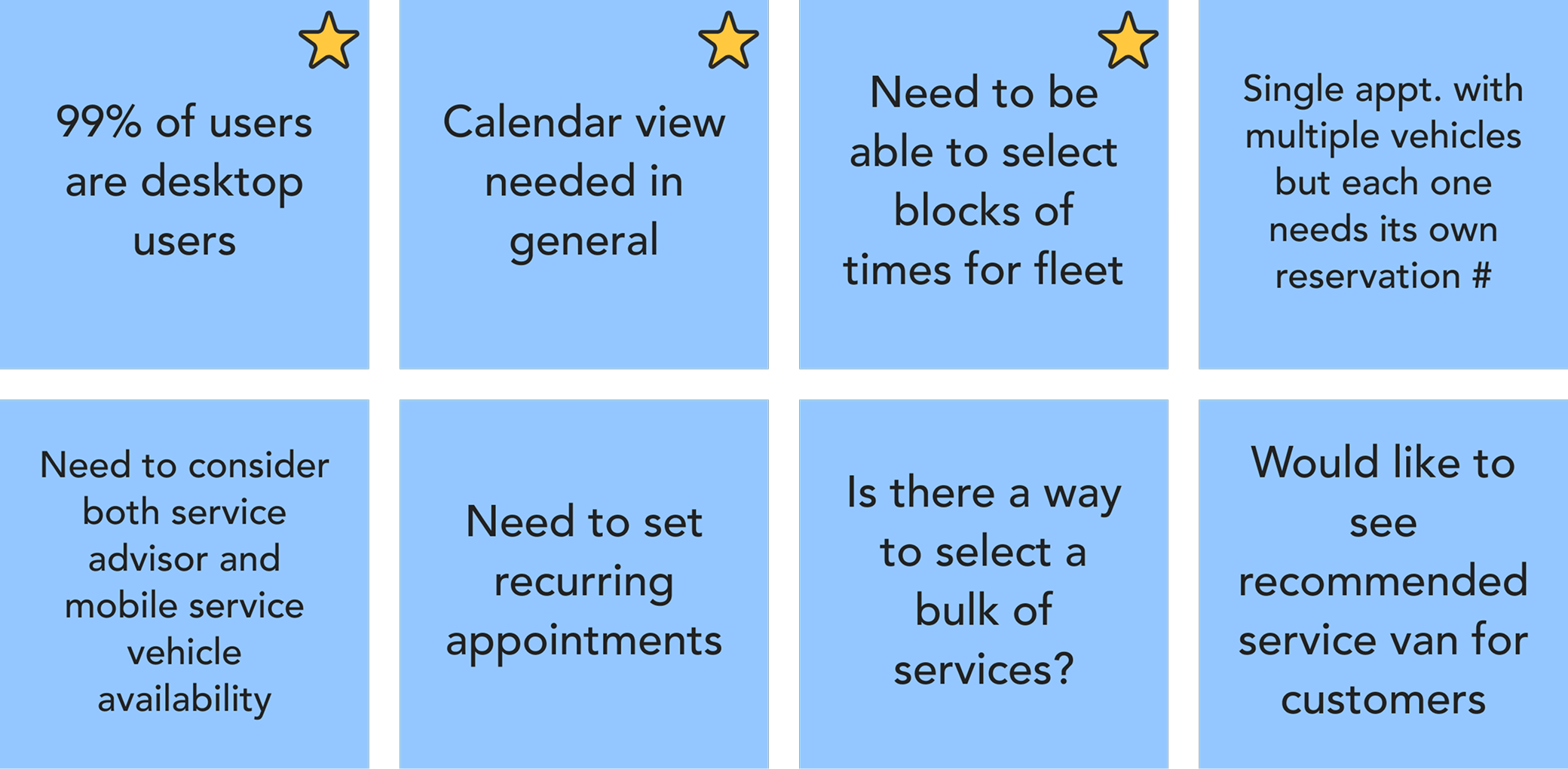
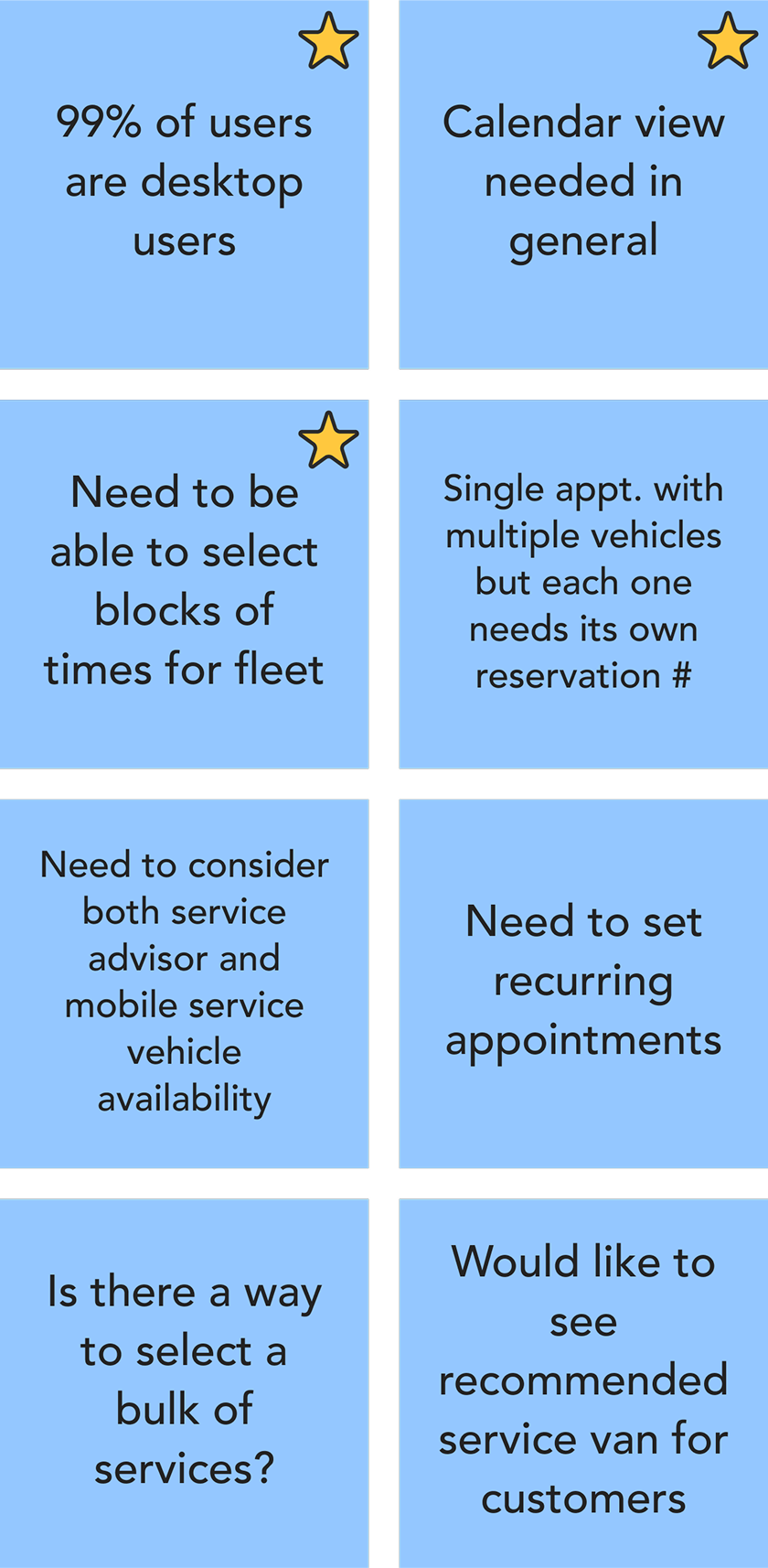
The tools dealer’s used prior to FSR+ to schedule appointments varied from the five dealerships we interviewed. We saw everything from Excel, Google Calendar, third party providers and even some older advisors still using a whiteboard to keep track of their appointments for the day. We saw the opportunity to create a single experience that streamlined Ford’s scheduling tool for dealers across the country.
“I’m still using a whiteboard to schedule mobile service appointments.”
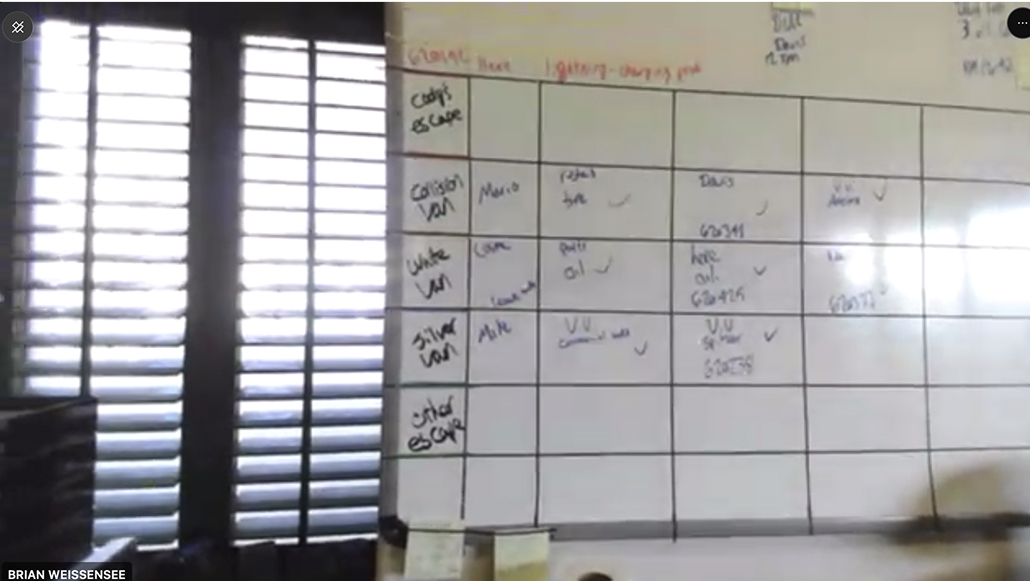
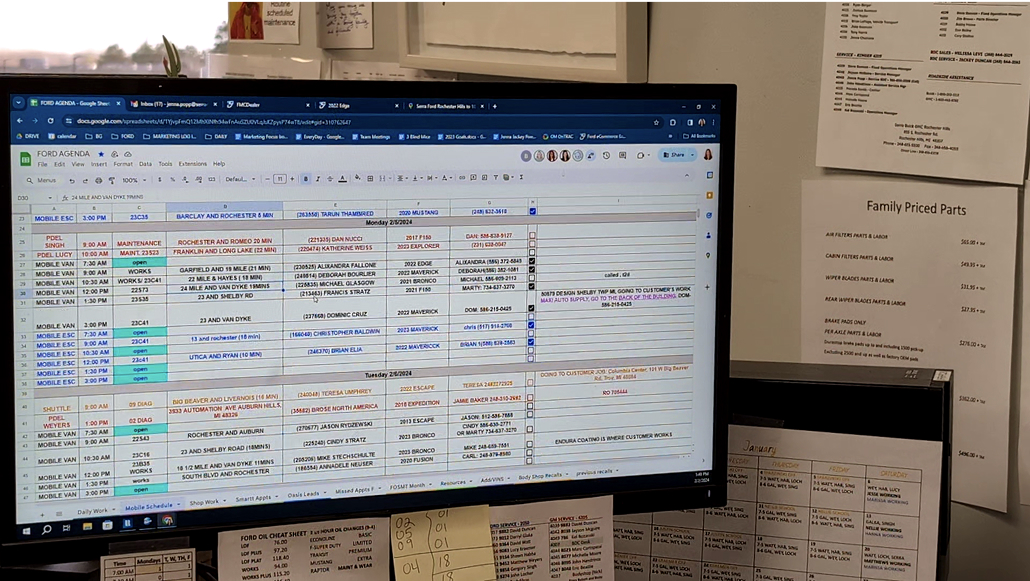
We translated the research findings into low fidelity prototypes to bring back to five different dealerships for user testing. While testing with older users, I noticed a pattern: many asked where they were supposed to click. Although it was tempting to help, I realized doing so would defeat the purpose of user testing. Instead, I made the intentional decision to observe without guiding them. This uncovered a deeper issue: if users were confused, the prototype wasn’t communicating clearly enough on its own.
Design Decision
I used this feedback to improve clarity in the interface by simplifying button labels, adjusting layout for better flow, and adding subtle visual cues to help guide users without extra instructions. This not only improved the experience for older users but also made the design more intuitive for everyone.
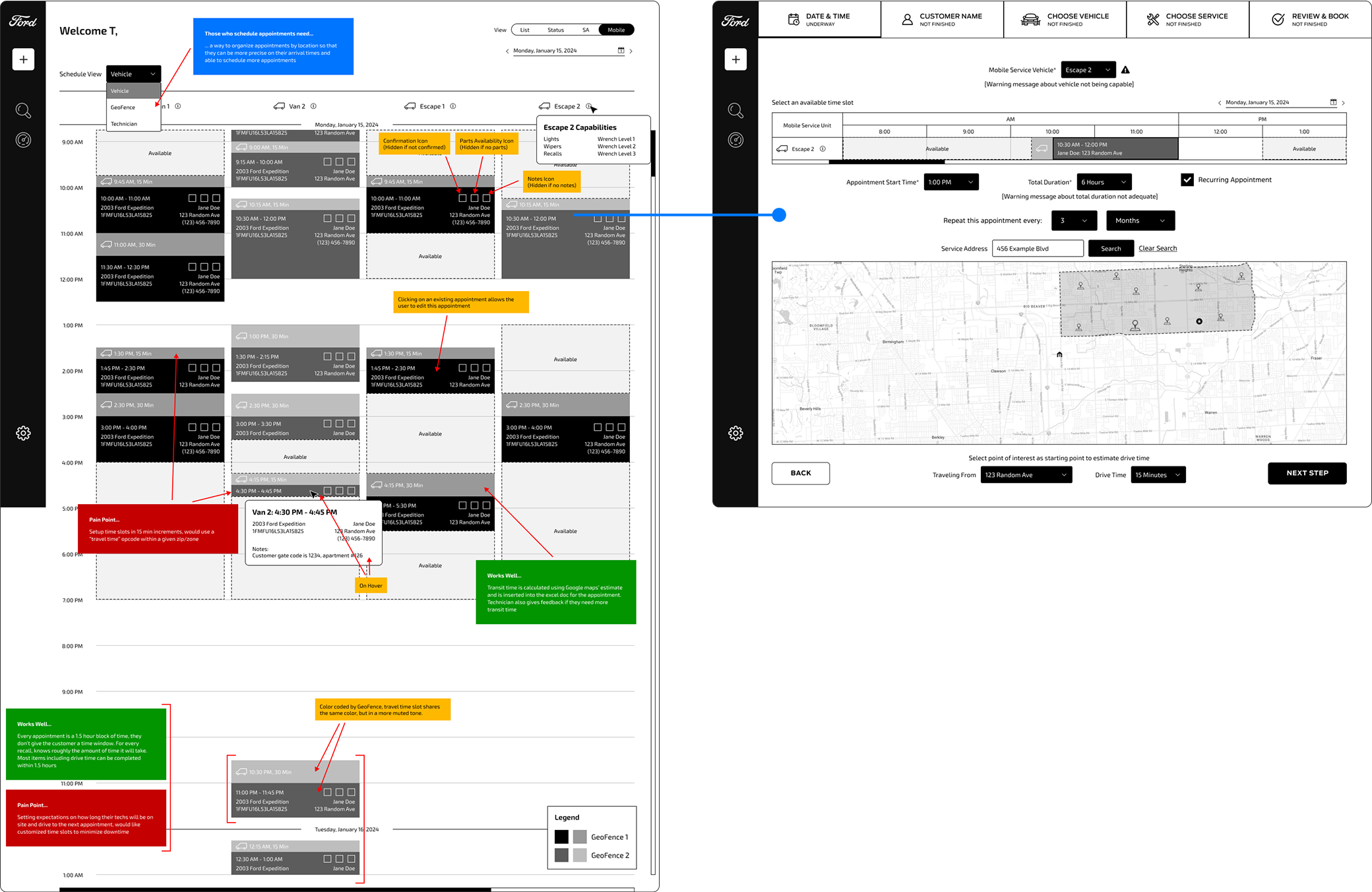
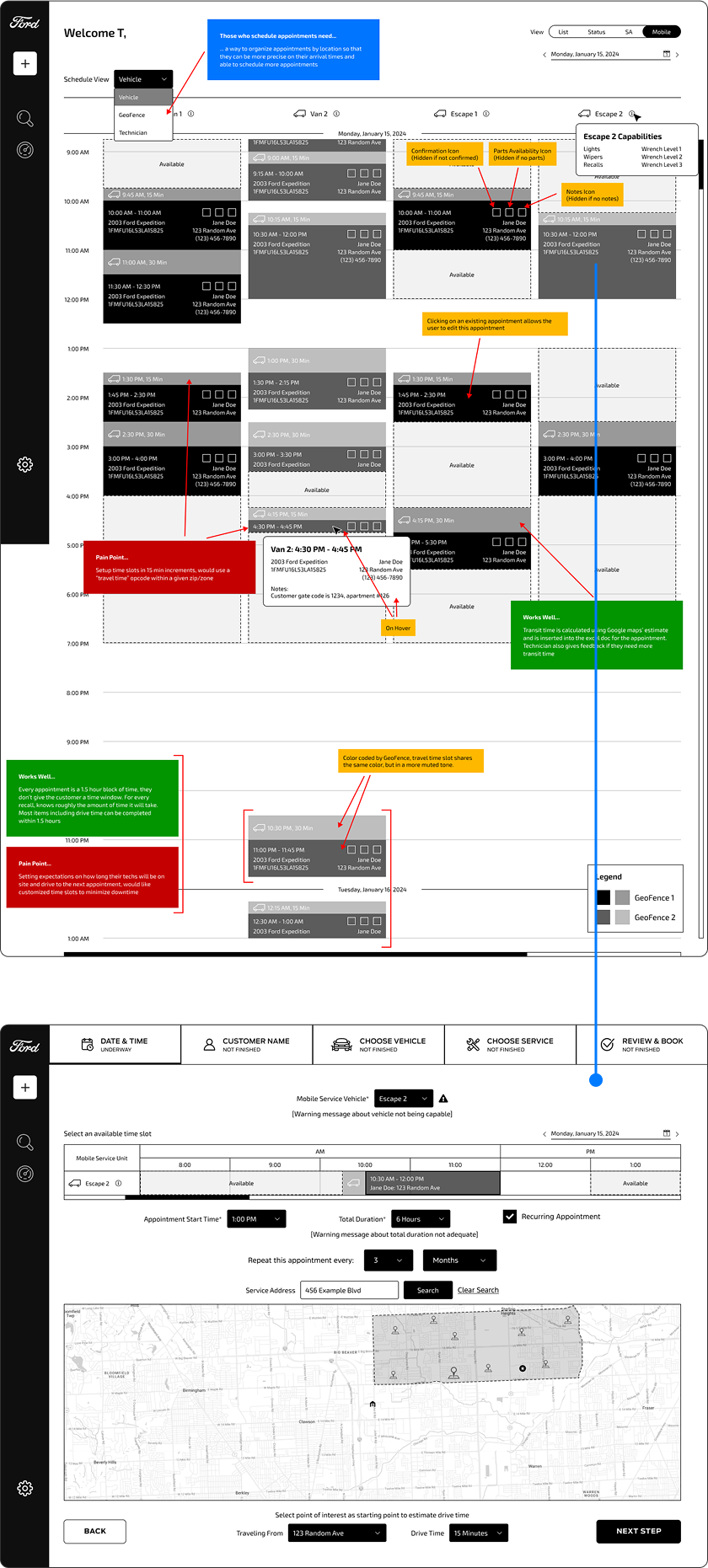
During research, we heard a consistent piece of feedback: dealers wanted the scheduling tool to feel more like Outlook or Google Calendar. These were tools they already used daily, so leaning into those familiar patterns felt like a natural way to reduce friction and encourage adoption. I took that insight and focused on simplifying the booking experience.
Dealers had to click through four different screens to complete a reservation. This added friction, wasted time, and increased errors.
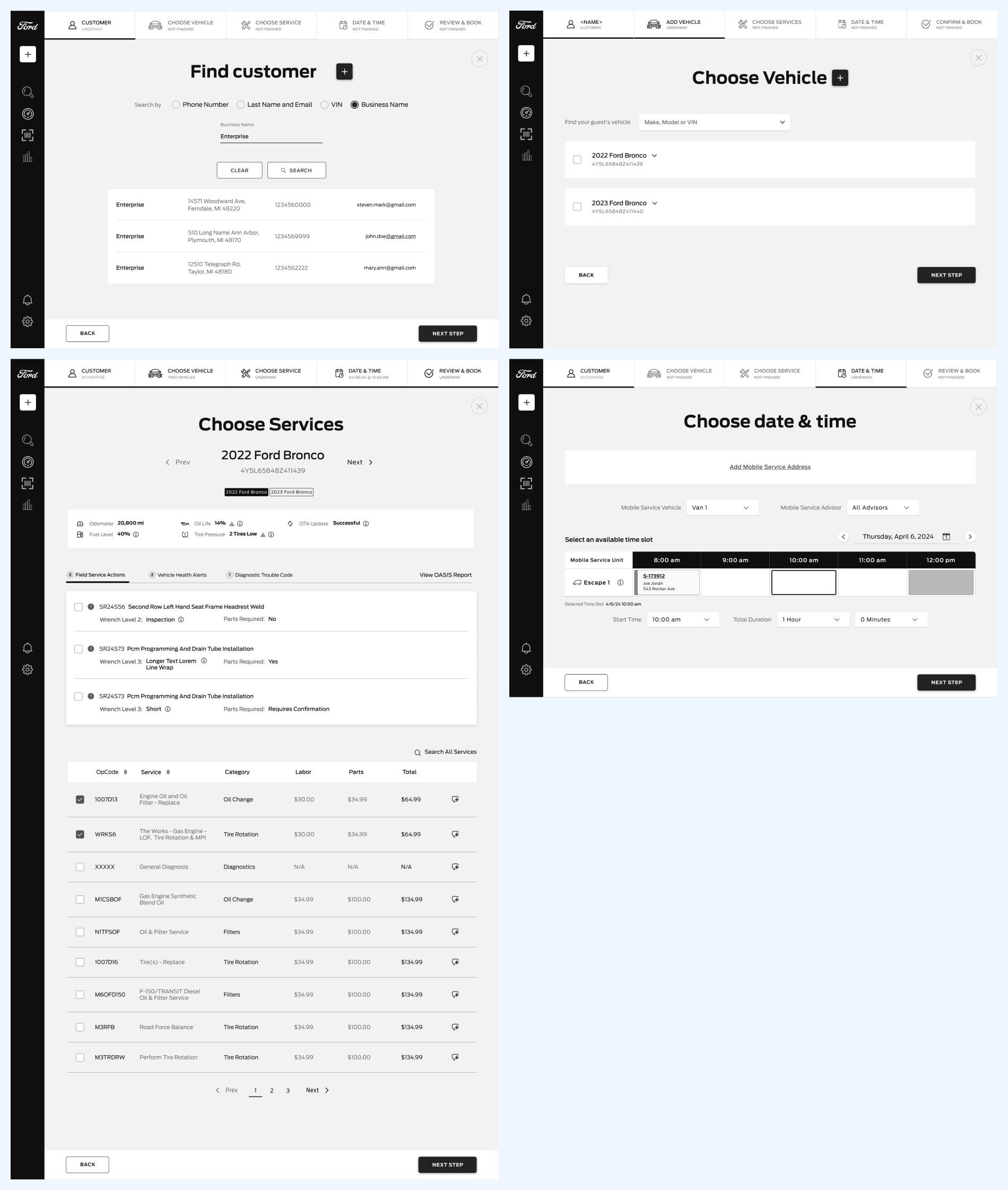

We consolidated the multiple steps into a single “New Reservation” modal that appears when clicking on an open time slot. This small change made the process feel faster and more intuitive.
We also introduced a customizable calendar view, giving dealers the ability to surface their most-used service vans. Together, these updates made scheduling feel more familiar, more efficient, and more tailored to how they actually work.
Validated by dealers and now in global rollout across the FSR+ platform, our solution increased product utilization, streamlined workflows, and improved satisfaction for both dealers and customers. Dealers can now schedule entire fleets in fewer steps, while customers benefit from faster, more flexible service without visiting a dealership.
Hundreds of Ford dealers were onboarded between 2024 and 2025. The work is currently under patent consideration and was nominated for the 2025 Henry Ford Technology Award.